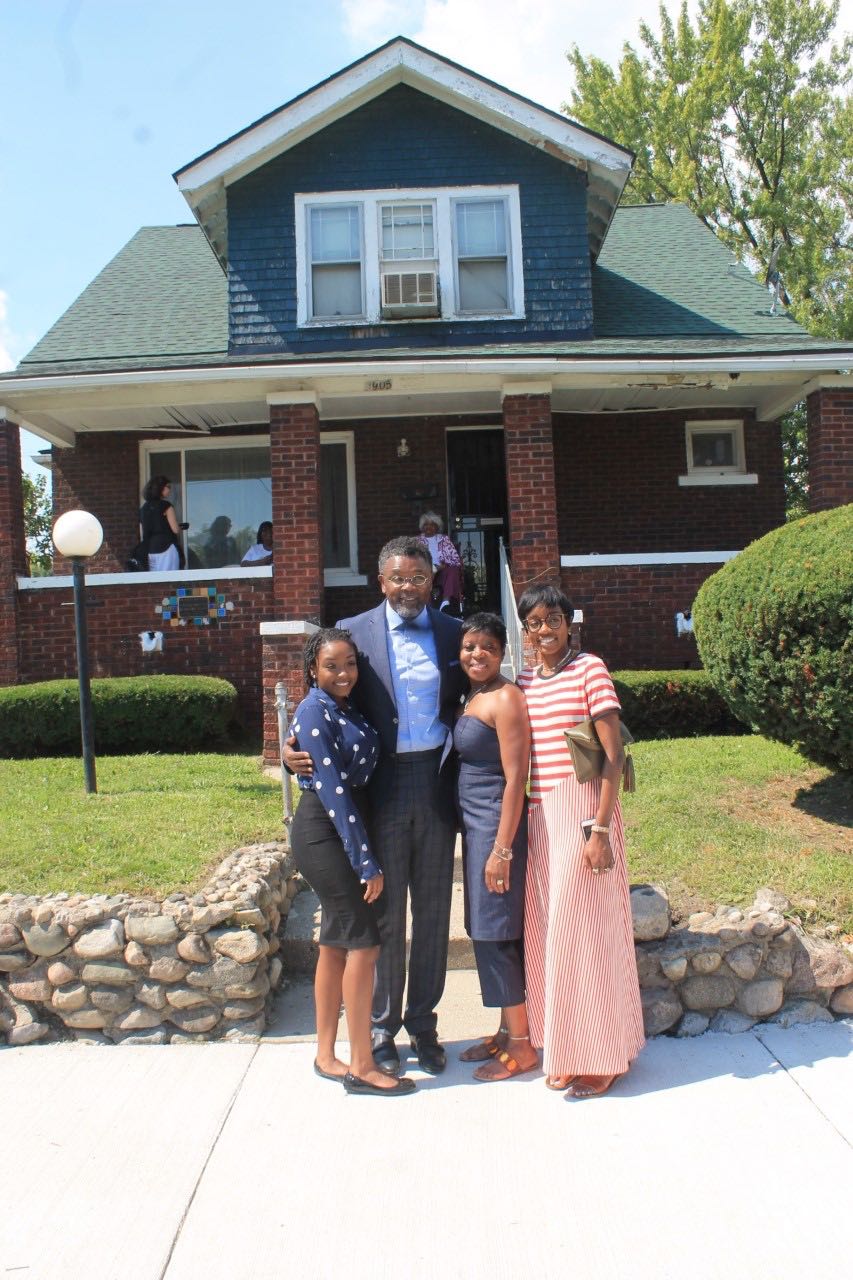
City of Detroit Director of Elections Daniel Baxter was born in the brick house with the green roof on the corner of Garland and Charlevoix in 1965. Forty years prior, it was the backdrop of the Dr. Ossian Sweet murder trials, which impelled the fair housing movement and put the issue of racial inequality in Detroit at the forefront. Baxter’s parents, William and Ruby, put a $1,500 down payment on the house in 1958 and have owned it ever since.
Now, anyone interested in learning about the home located at 2905 Garland can do so in the future after the city was awarded a $500,000 federal grant to expand the historic district of the Dr. Ossian Sweet home and preserve two more adjacent houses at 2912-14 and 2918 Garland that will preserve the famous site in perpetuity and memorialize an authentic Detroit civil rights story. The City of Detroit was awarded the maximum grant amount from the African American Civil Rights program of the Historic Preservation Fund, National Park Service, and Department of the Interior.
“As a child, the only thing that we heard about, was Dr. Ossian Sweet and that we lived in his house,” said Baxter. “From that point on, I became passionate to learn about the man who moved at 2905 Garland. I tried vigorously to imagine what Dr. Sweet’s peculiar fear felt like that night but there was no way I could feel that feeling. Dr. Sweet was a trailblazer and we stand on his shoulders. He stood on the frontlines for civil rights for blacks in Detroit and as a consequence, I had the opportunity to live in that house.”

Dr. Ossian Sweet started his practice in Black Bottom Detroit, one of the few neighborhoods in the city where blacks were allowed to live at the time. Looking for a better living opportunity for his family beyond the poor working-class area of Black Bottom, Dr. Sweet and his wife Gladys purchased a home in a predominantly white neighborhood in 1925 for $18,500, which was higher than market value at the time.
The Sweets moved into their new home on September 8, 1925, resulting in confrontations from white neighbors. The following night, on September 9, an angry mob gathered in front of the house to drive the Sweets and nine other occupants from the home. Dr. Sweet decided to stand his ground, even with the protestors throwing rocks at the home, breaking windows. In fear that the mob would burn down the home, Dr. Sweet’s younger brother Henry fired a shot into the crowd, wounding Erik Holberg and killing neighbor Leon Breiner.
All 11 occupants in the Sweet home that night were put on trial that November but had the support of James Weldon Johnson and the NAACP, who commissioned attorney Clarence Darrow to represent the family. The first trial concluded with a hung jury and a mistrial by Judge Frank Murphy. During the retrial, Henry Sweet, the shooter, was acquitted, along with Dr. Sweet and several other defendants.
Life after the trials were not sweet at all for the Sweets. Their daughter Iva contracted tuberculosis and died months after her second birthday. Gladys Sweet contracted TB while in the Wayne County Jail and died in 1928 at age 27. Henry Sweet also died from TB in 1939. Dr. Sweet’s health began to decline as well and also began to fall into debt. He sold the home on Garland in 1958. In 1960, Dr. Sweet committed suicide, ending years of trials and tribulations stemming from the murder case.
“For me, it’s been very personal,” said Mayor Mike Duggan about the Sweet murder trails. “When I was at the University of Michigan Law School, we studied this carefully. The judge on the case, Frank Murphy, the lawyer in this case, Clarence Darrow, and, of course, being from Detroit this meant a lot.
“As Detroit continues to move forward, we cannot forget where we’ve been. Preserving the Dr. Sweet home and expanding the historic district will give us a chance to reflect on the struggles many African-American families have faced and celebrate champions like Dr. Sweet and others, who stood up for what is right.”

The effort to preserve the historic district of the Dr. Ossian Sweet Home is among 51 winning projects in 24 states that will preserve sites and highlight stories related to the African-American struggle for equality in the 20th century.
The grant will pay for the cost of preserving and interpreting a space in the Sweet house that will be open to the public for scheduled visits and rehabilitating two additional properties across Garland Street, where the violent mob gathered and where the shooting occurred. The City is also in the process of expanding the district to include those properties at 2912 and 2918 Garland to cover the broader anti-integration movement and the events at the Ossian Sweet House as it relates to the Civil Rights Movement. Today, the Sweet home is privately owned by the Baxter family, where Ruby, her daughter Monica, and her son Aaron currently live. It was added to the State of Michigan Register of Historic Places in 1975, the National Register of Historic Places in 1985, and received a State of Michigan historical marker in 2004.
“We salute the City of Detroit for this historic day and others who helped in securing this grant,” said Rev. Wendell Anthony, President of the Detroit Branch of the NAACP. “This grant allows us to commemorate another part of our nation’s history, reminding us all to remember and to say freedom and justice and liberty. Oh. How sweet it is.”